Introduction
Despite arguably not contributing much to the actual sound of their music, expressive movements made by the musicians are key parts of most music performances.
"What if they 'have to' move to even make music?", I wondered. Inspired from that thought, I wanted to create "Uwi", an experimental instrument where performers actually have to move in order to play a piece.

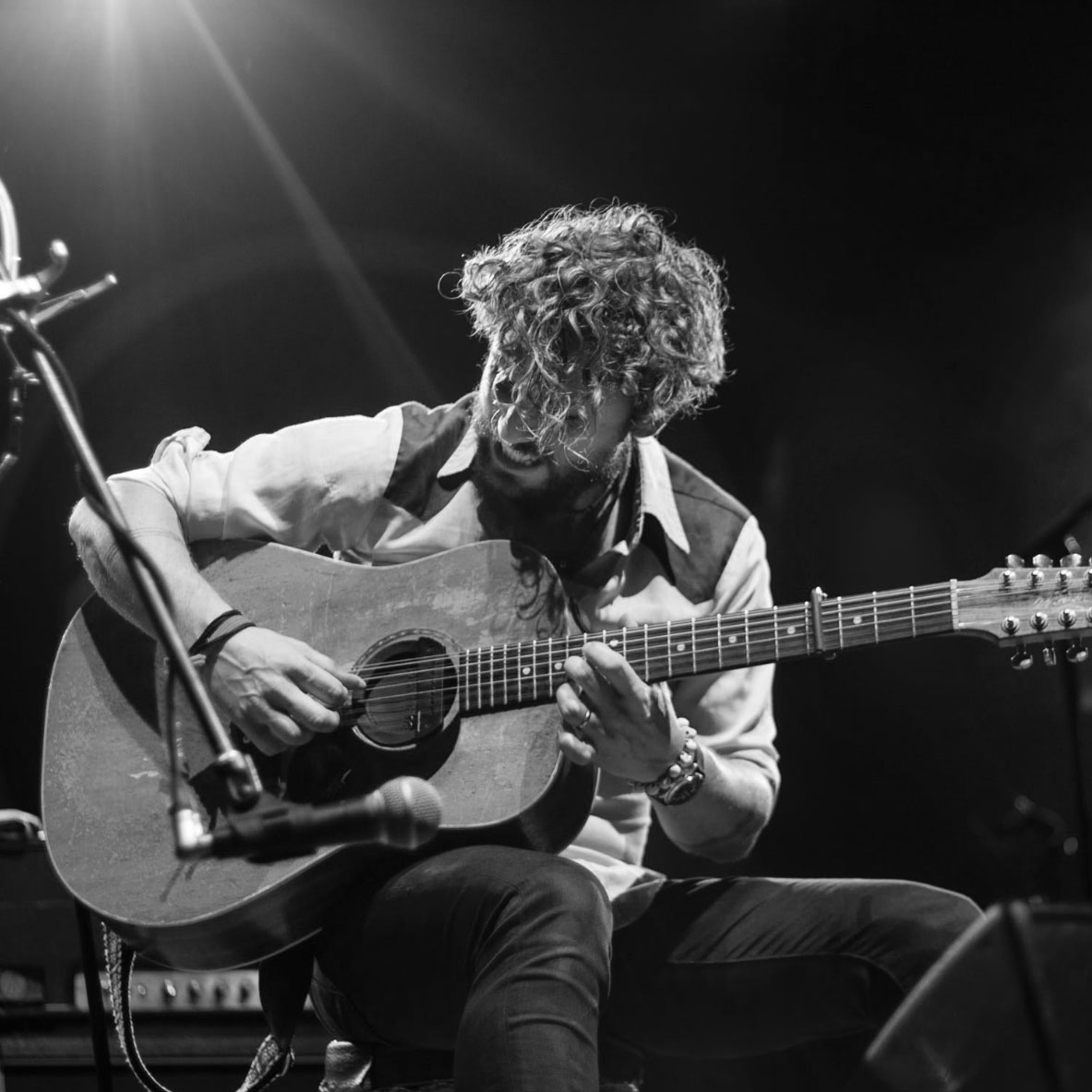
Overview
Opportunities
How engaging a musical performance is depends to an extent on the type of musical instruments the artist is using. More movements are often associated with how interesting-to-watch the performance is. Movements are also often used by musicians to express their emotion in the music
Approach & Goals
In this project, I aimed to design Uwi, an experimental wind instrument that requires the performer to move to control the sound, and see what the experience of playing and watching it is like.
Final Design
Exploring the use of body movements in musical performances.
Motion-Controlled Wind Instrument
- Uwi is a wind instrument. The sound activates when the device detects a blow from its microphone.
- The form of the instrument gives the affordance of blowing through the mouthpiece at the back of the instrument.
- Sound holes were placed right on top of the speaker to allow output sound to pass through.
- The internal windway directs the wind from blowing directly to the microphone.
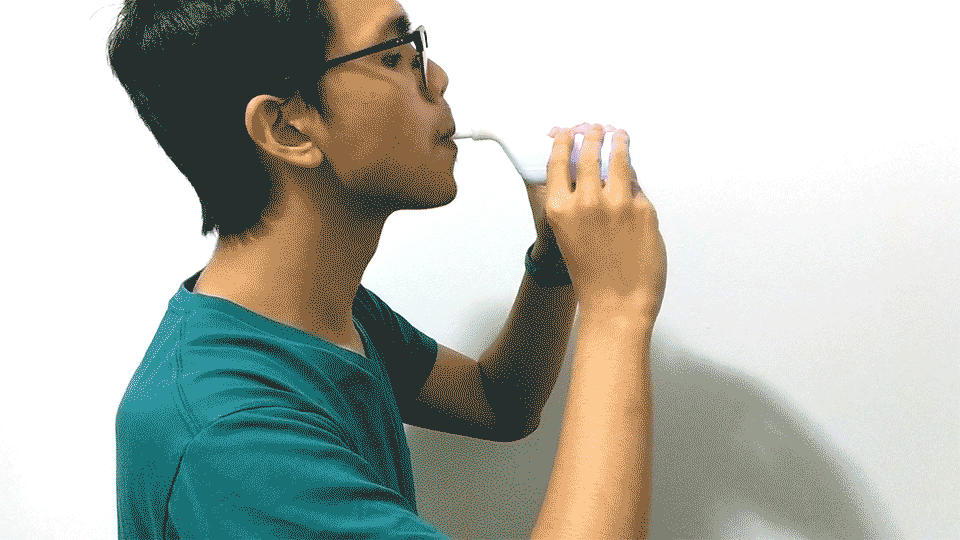
Tilt to Change Pitch
- Users can tilt vertically to change the pitch that the instrument will play once blown.
- The higher the tilt, the higher the notes. The notes are in the C Major scale.
- LED lights will lid up to let the performer knows which note it will play so that the performance can be carried out reliably.
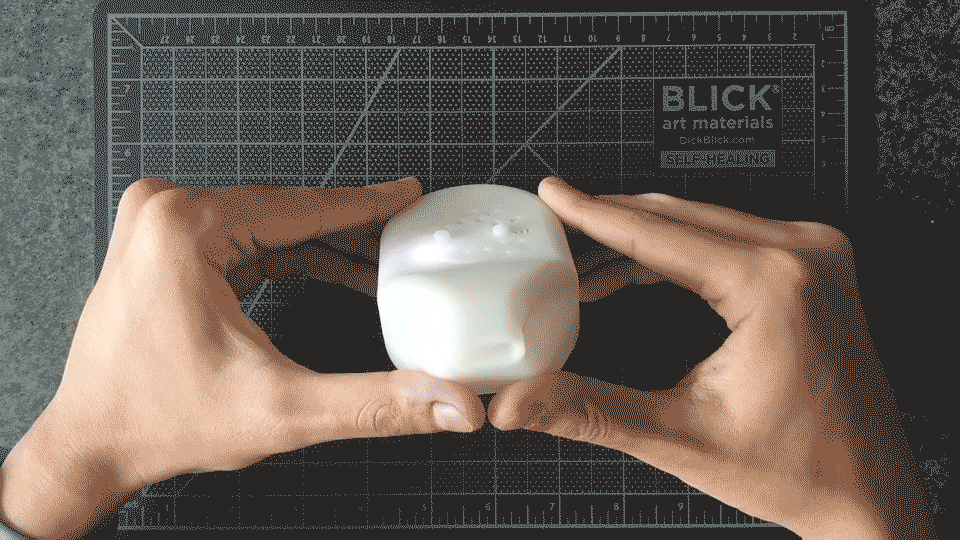
Sharps & Flats
- Users can tilt in another direction to add sharps or flats into the pitch.
- This enables the instrument to play in full chromatic scale.
- LED lights will also indicate the pitch modulation.

Octaves
- To play a wide variety of songs, we will need more than one octave.
- Users can hold the buttons for octave shift: left and right button for lower and higher octaves, respectively.
- This makes the pitch range of this instrument 3 octaves wide from B2–C#5
- Users can hold the buttons for octave shift.
- Colors of the LED changes according to the current octave it will play.
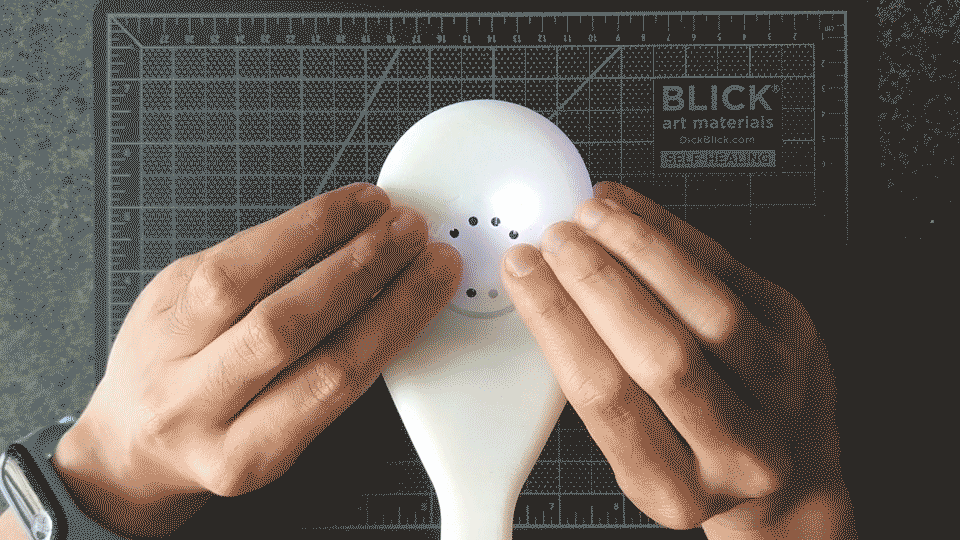
Plug & Share!
- New and flashy technology invites people to try and experience, but wind instruments are not the best to share with other people.
- A special mouthpiece was made so that users can plug in a plastic straw and let other people experience the instrument for themselves.
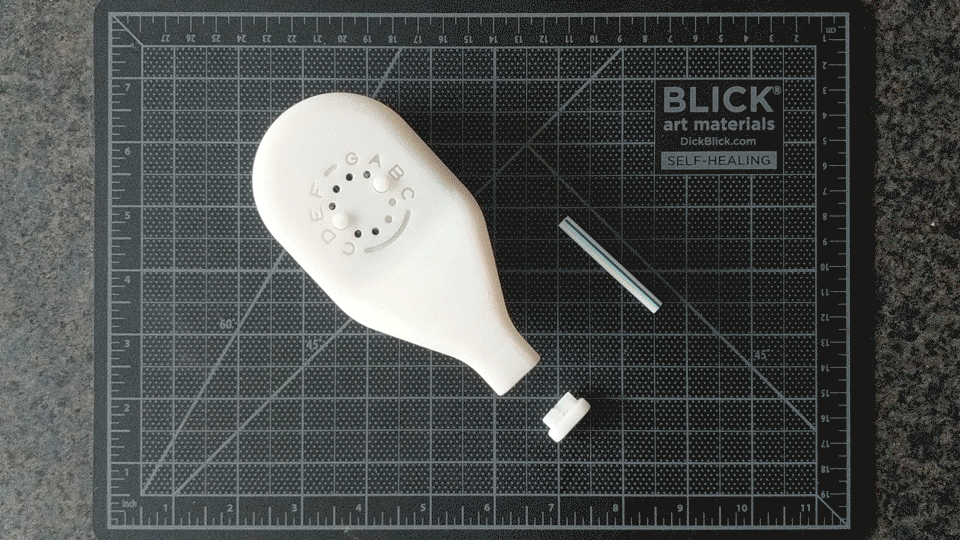
Process Overview
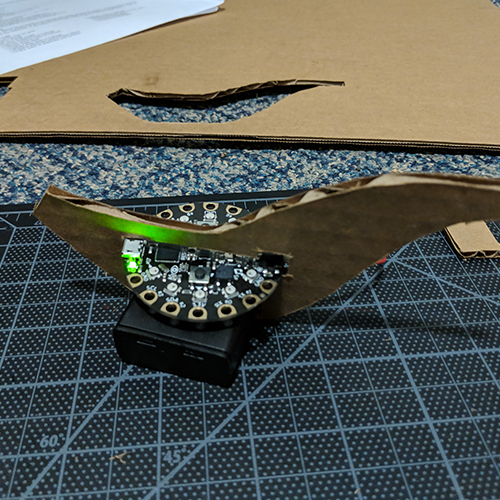
1. Form Ideation
- Technical Considerations
- Deciding on Sensors
- Sketching
- Iterative Modeling
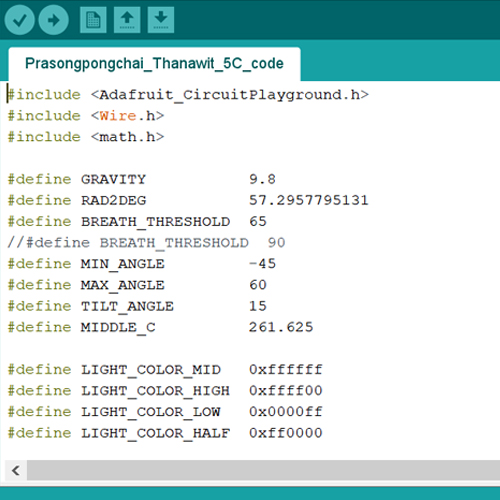
2. Coding
- Arduino Coding & Testing
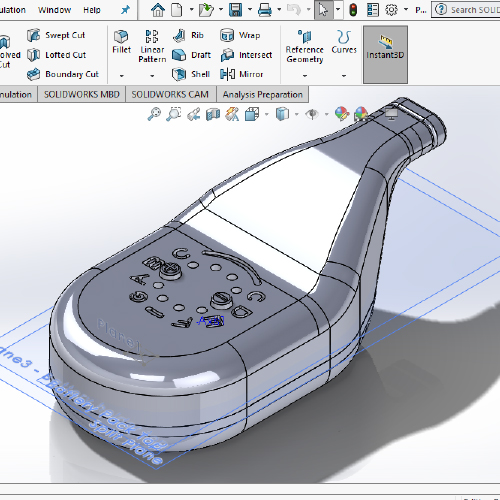
3. 3D Modeling
- SolidWorks Modeling
- SolidWorks Assembly
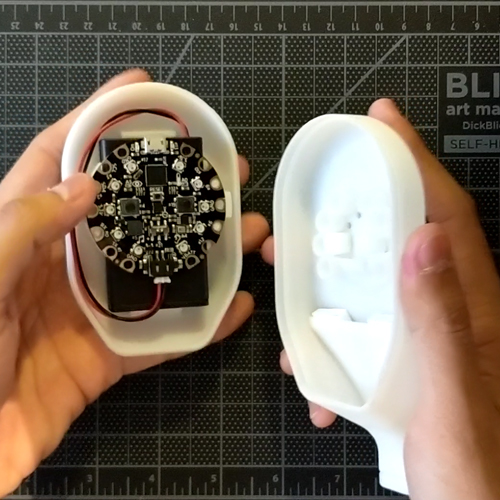
4. 3D Printing & Iterative Design
- Design for 3D Printing
- Iterative Design
Technical Considerations
Adafruit Circuit Playground
Adafruit Circuit Playground was the development board used in this project. It is an Arduino board packed with a variety of built-in sensors and output components.
Considering the design question of incorporating movement into music-making, I decided to use these components available on the board:
Input
- Microphone/Sound Pressure Sensor as the trigger for sound. I decided on making it a wind instrument as it fits well with the available input options and makes the instrument more challenging to play.
- Accelerometer for detecting movements, specifically tilting angles.
- Buttons for more manipulation to the sound.
Output
- Speaker For sound output.
- LEDs (Neopixels) As secondary feedback to the performer.
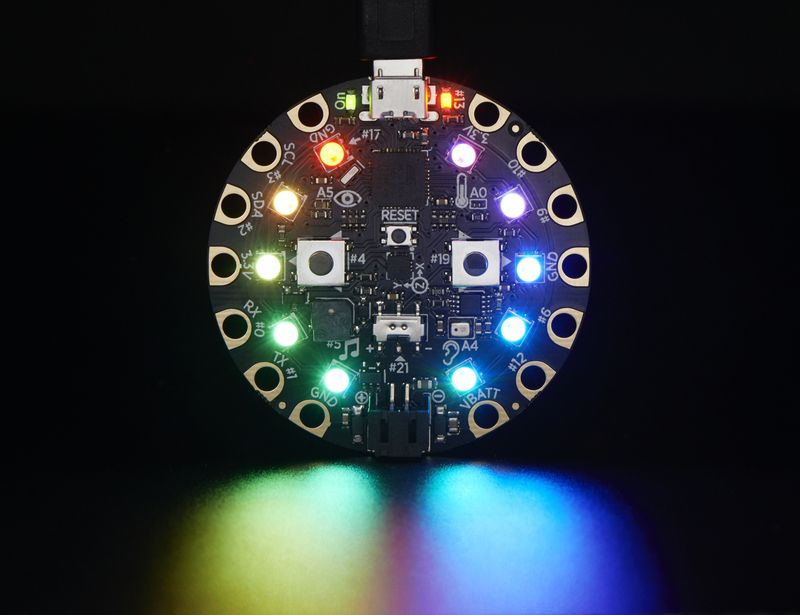
Form Ideation
The form of the instrument was ideated through multiple methods including sketching and iterative modeling.
Sketching
Sketches were drawn to brainstorm the forms of the instrument. The ideas were based on the shape of the Circuit Playground board and the pose that the musician will be in while performing with this instrument. These initial designs were inspired mostly from tobacco pipes and bird whistles.
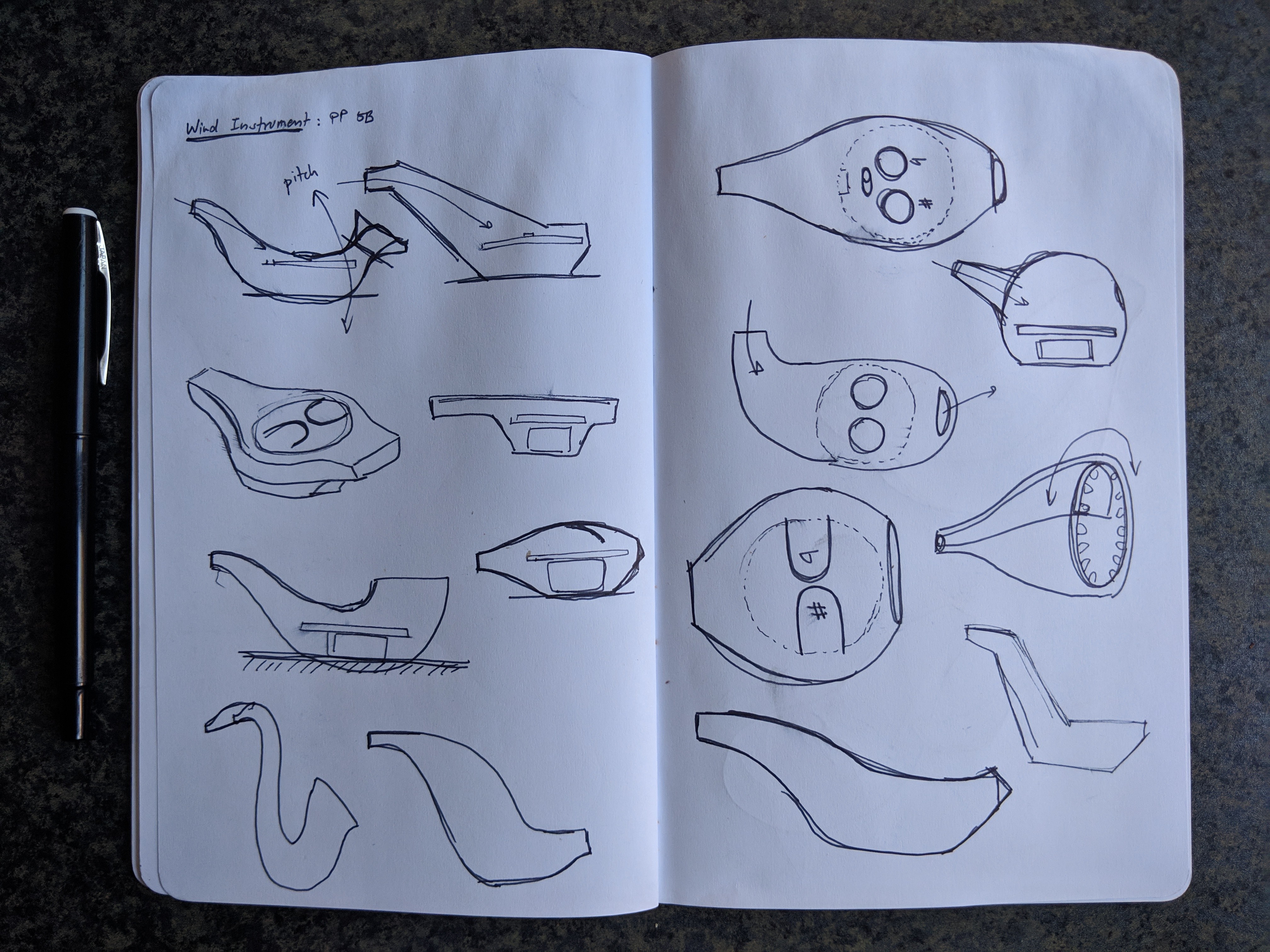

Iterative Modeling
Cardboard sketch models were then made in 1:1 scale to help visualize the actual scale of the design before jumping into 3D modeling. This also aided my decision for how the electronics should fit into the form.
This process helped me realized that the battery pack should be arranged with the long edge parallel to the long side of the instrument as doing otherwise would make the body of the instrument too wide.
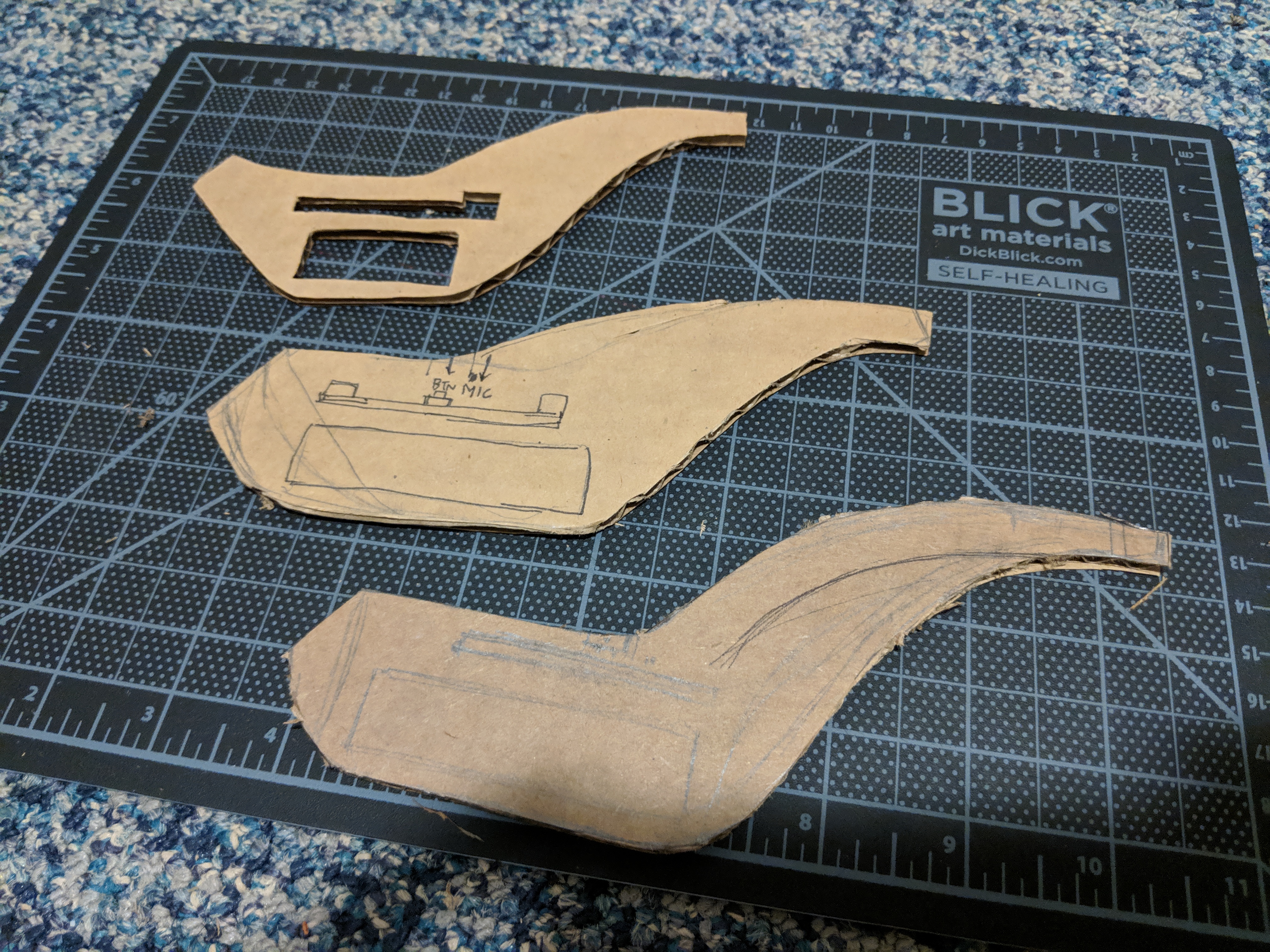
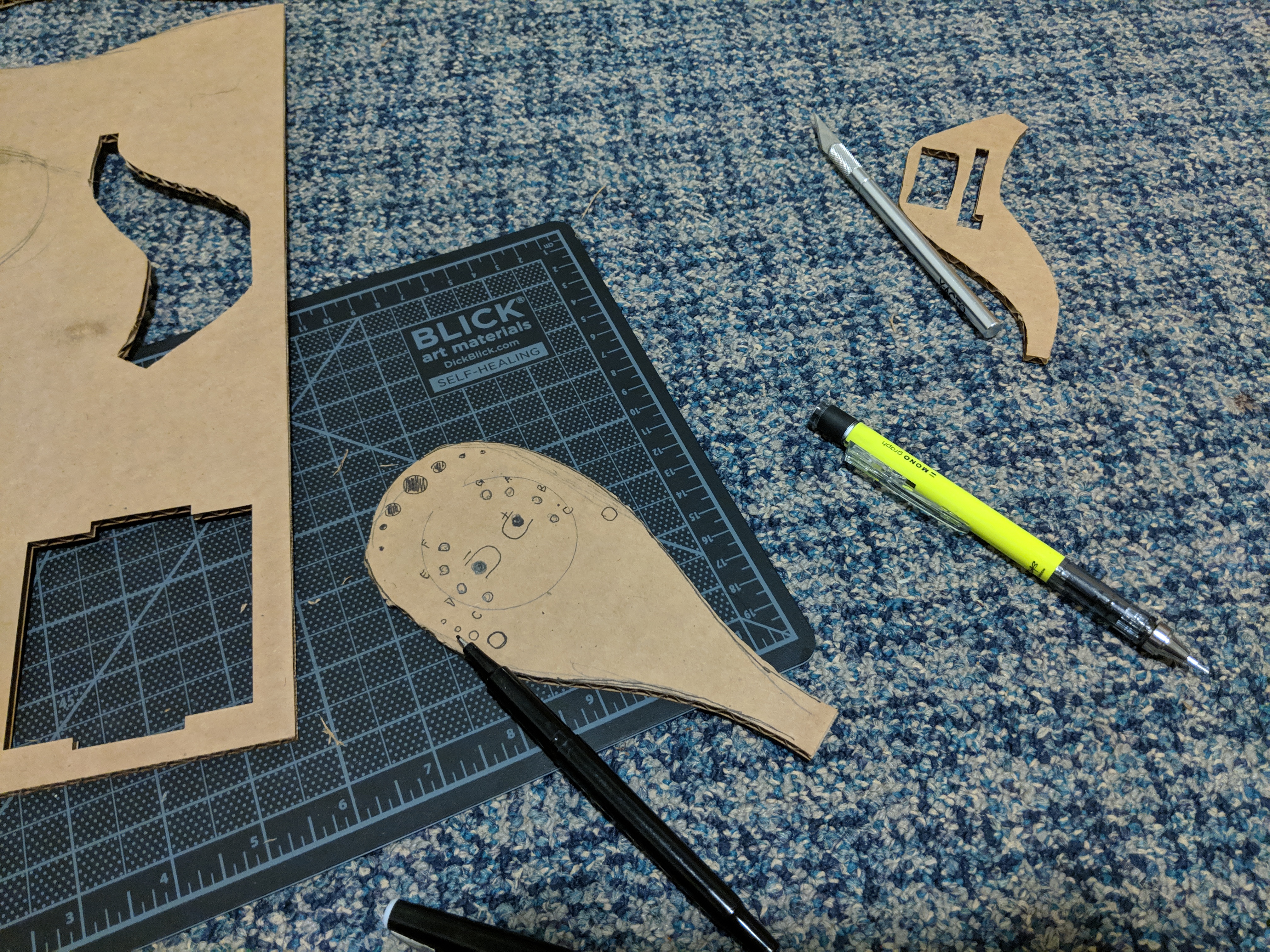
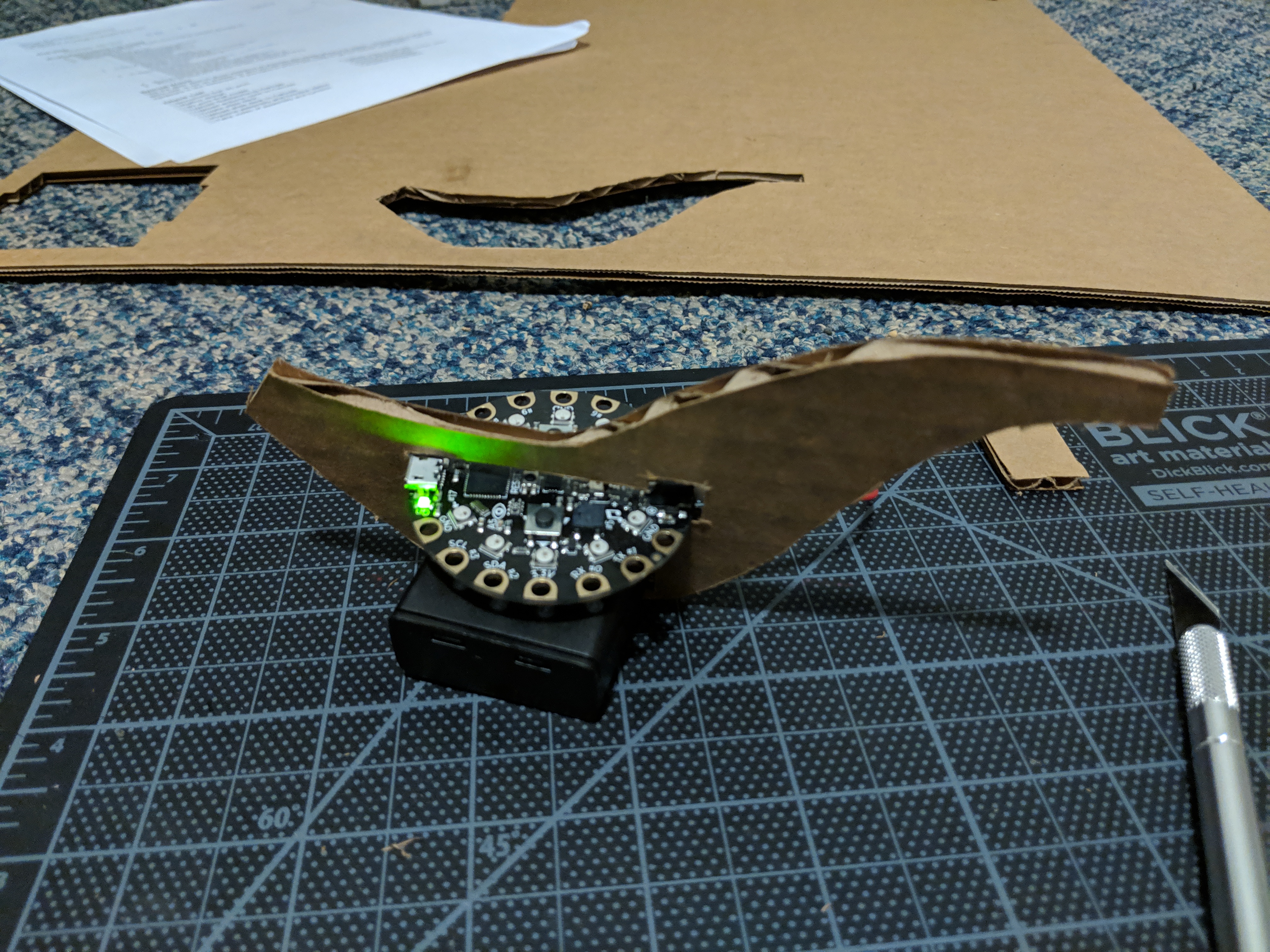
Coding
With the form designed, the core logic of the instrument was coded using Arduino C++ on the Arduino IDE. Circuit Playground's sensors and output were used to make the wind instrument which is controlled by the movements of the performer.
I went through a few iterations of the behavior of the interaction design while trying to make the instrument:
- Versatile able to play a variety of songs, not being limited to a certain scale
- Fun to play easy enough to pick up, and challenging enough to be fun
- Expressive enables multiple play styles
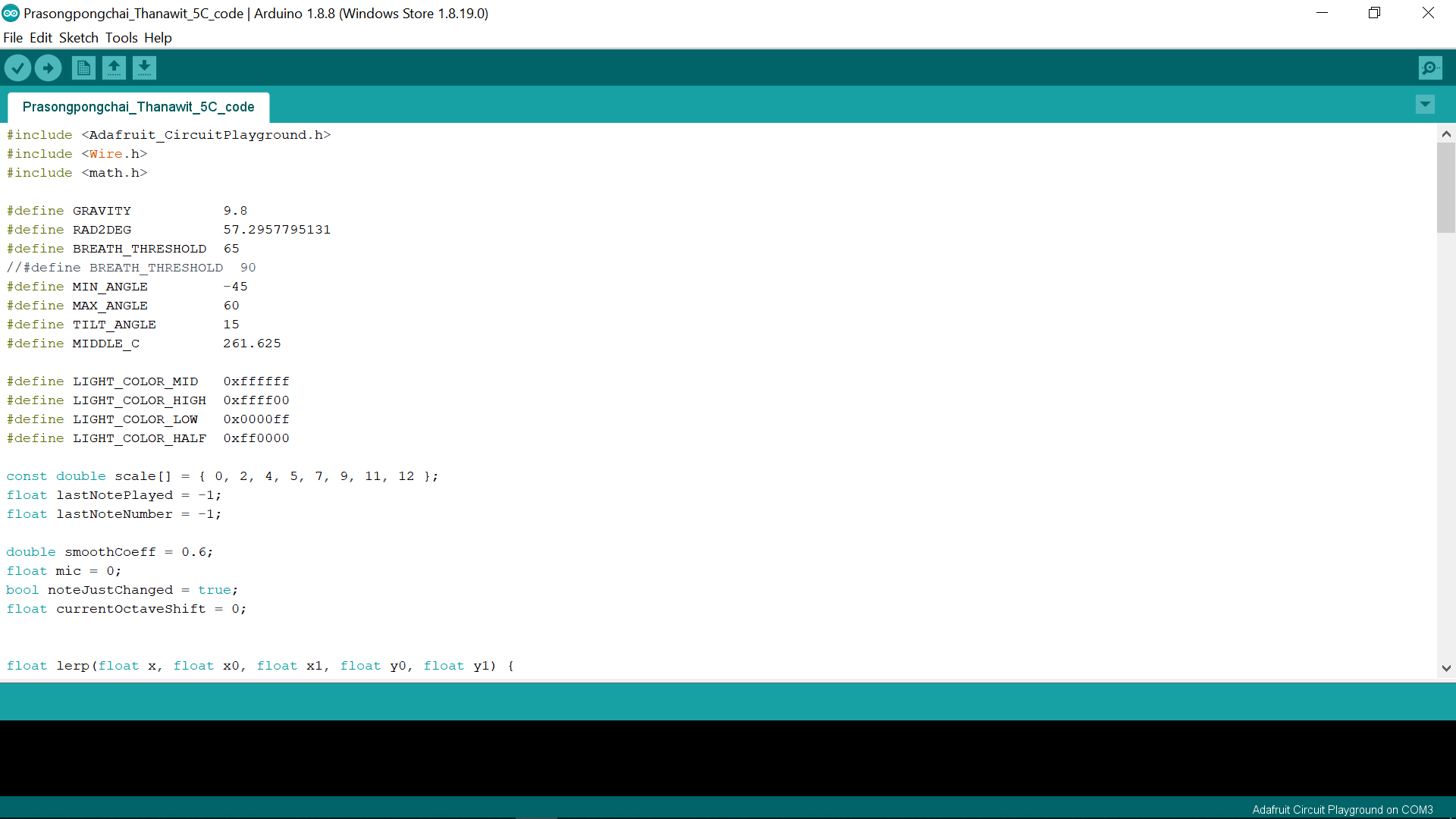
Interaction Design Iterations
1st Iteration
The tilt angle was mapped directly and continuously to the pitch, allowing performers to play at any frequencies, including those outside of standard western pitches. This is similar to how fretless instruments, such as violin, works in terms of pitches.
2nd Iteration
After some testing and trying to play songs on it, it became clear that the continuous mapping required too much precision and made it too hard to play. So, I changed the mapping to only map the angles to notes in a major scale. I also tried to add the other axis of tilting to allow sharp/flat pitches.
3rd Iteration
Since most songs requires a range larger than an octave, I added the ability to shift between octaves though the available buttons on the board, expanding the range of the instrument to 3 octaves.
3D Modeling
The design was then modeled in SolidWorks. The parts were designed to be compatible with 3D printing processes.
The parts were then assembled virtually also in SolidWorks to see if, and how, they fit together and to check if there are enough indexing features.
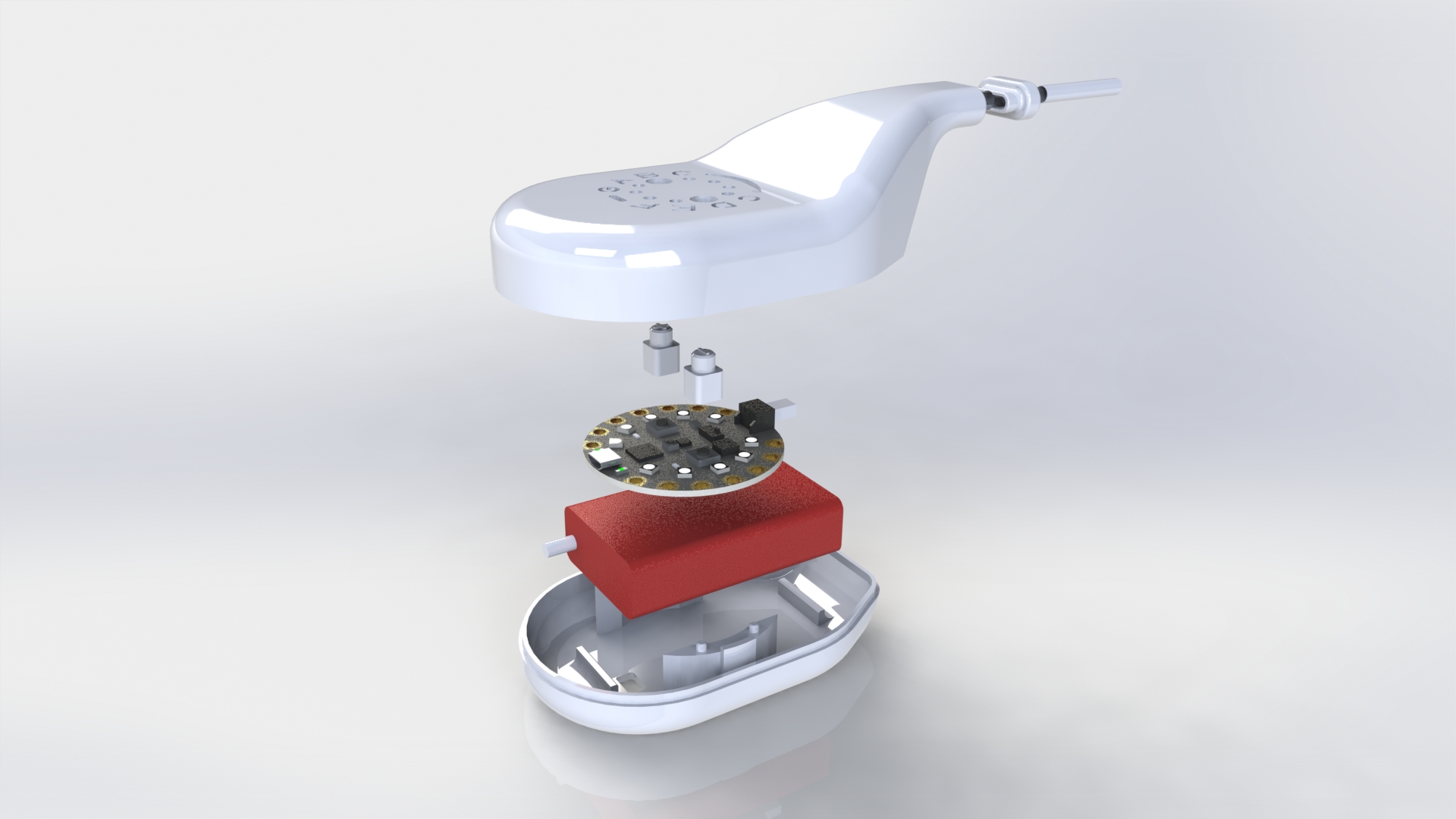
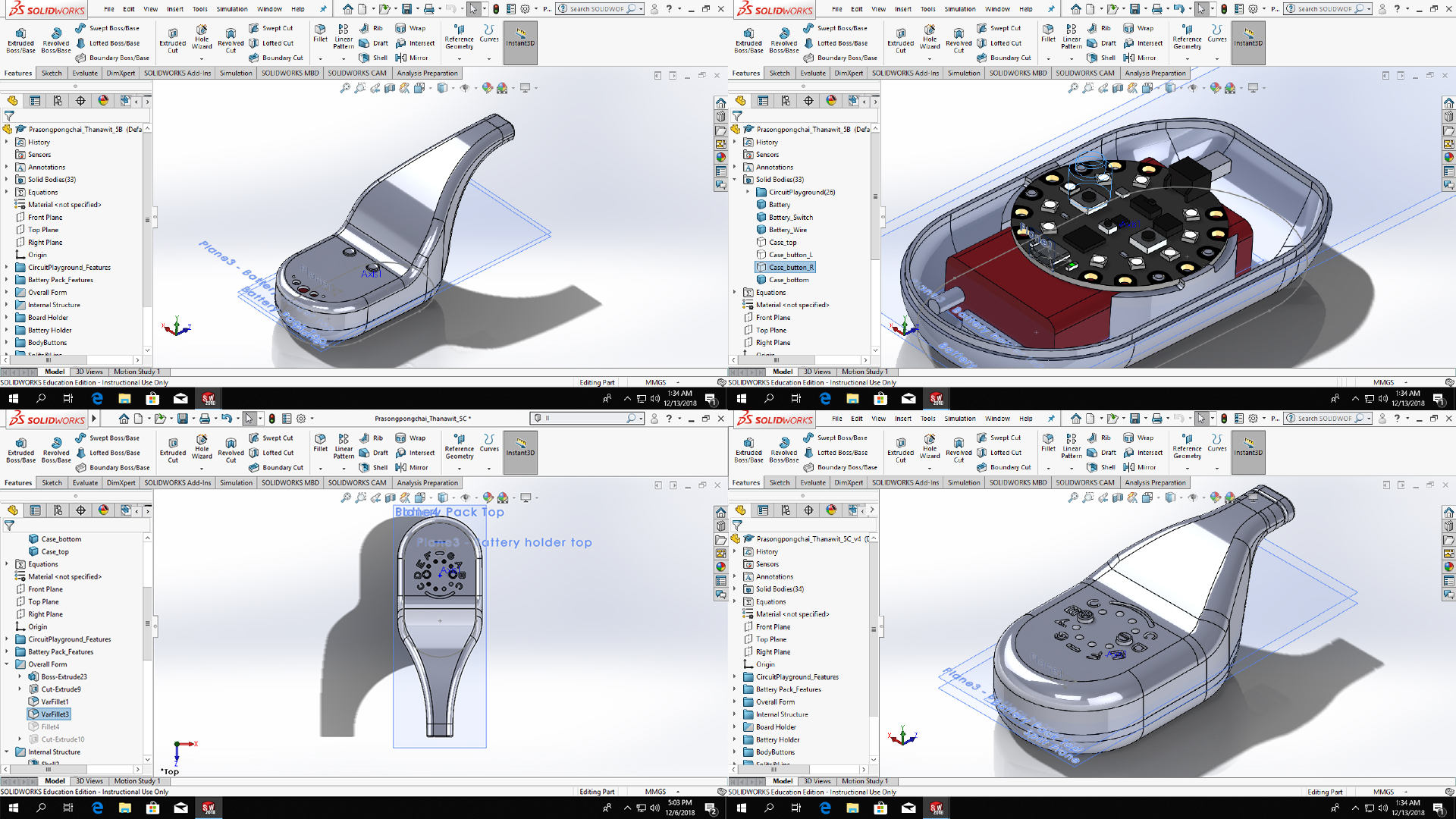
3D Printing & Design Iteration
1st Iteration
The initial design has a long windway with sound holes in the front of the instrument. I also tried to design the housing so that LEDs will shine through the top surface, lighting up the pitch letter to let the performer know what note will be played when blown. The model was 3D-printed in PLA as material.
What Worked?
- Friction fit worked well. Parts can be held together reliably without any screws.
- All electronics parts, including the board and the battery pack, fit securely in place as designed.
What Didn't Work?
- The windway was too long, making the air flow too soft at the microphone.
- Lights from LEDs barely went through the top surface as the light walls were slanted and the top surface was too thick.
- Sound holes were too far away from the speaker, resulting in a soft, muffled output sound.
- Aesthetic issue: the placement of the buttons and the sound holes formed a spooky face that is difficult to be unseen once spotted.

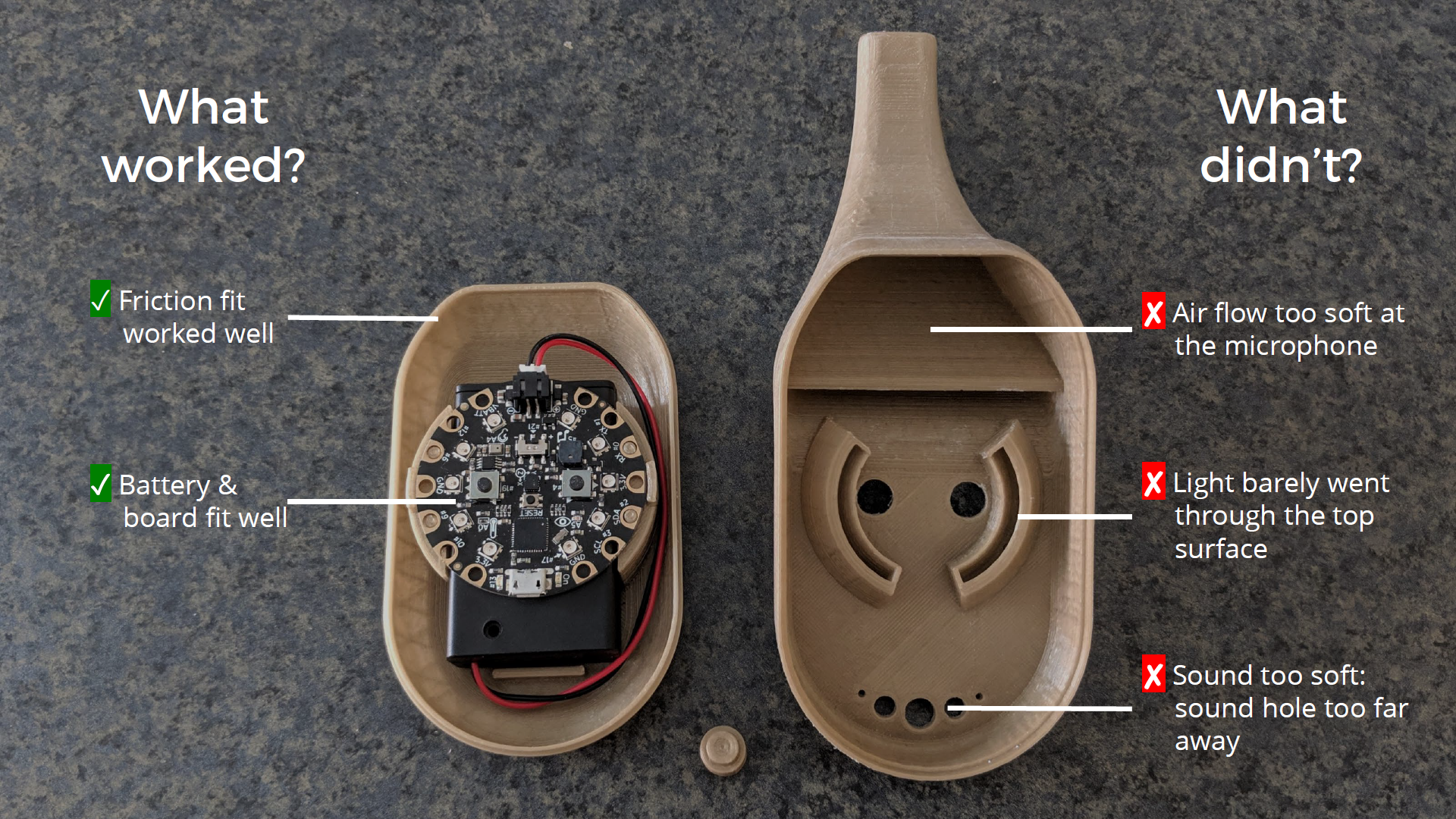
2nd Iteration
In this iteration, I tried to address issues found in the 1st iteration: light walls were redesigned with pitch letters now visible on the top surface, the windway was shortened, the sound holes were moved, and additional wind walls were added.
This iteration of the model was 3D-printed in ABS due to the unavailability of the PLA 3D-printer used in the 1st iteration. In preparation for the material change, tolerance values were adjusted to be wider to compensate with possible shrinkage of ABS prints.
What Worked?
- The instrument looked better and more compact.
- The visible pitch letter gives better signifiers for the users to understand that this is a musical instrument.
- LED effects became much more apparent.
- Air flow was more stable and the sound output was clearer.
What Didn't Work?
- Air flow was still sometimes unstable
- Due to the tolerance compensations, parts became too loose when assembled.
- When this prototype was shown to other people, they cannot try it as it already had mouth contact from initial testing.
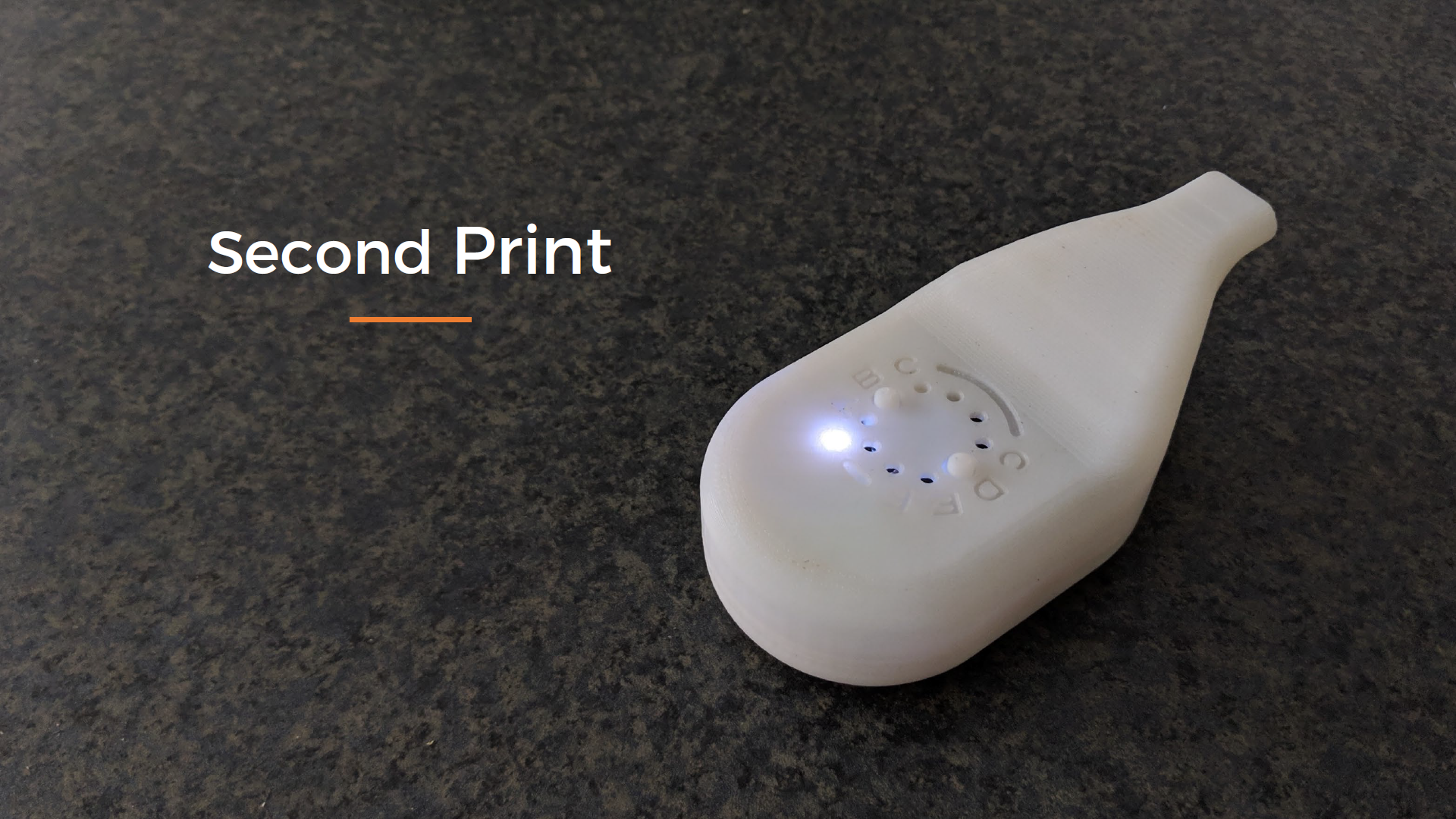
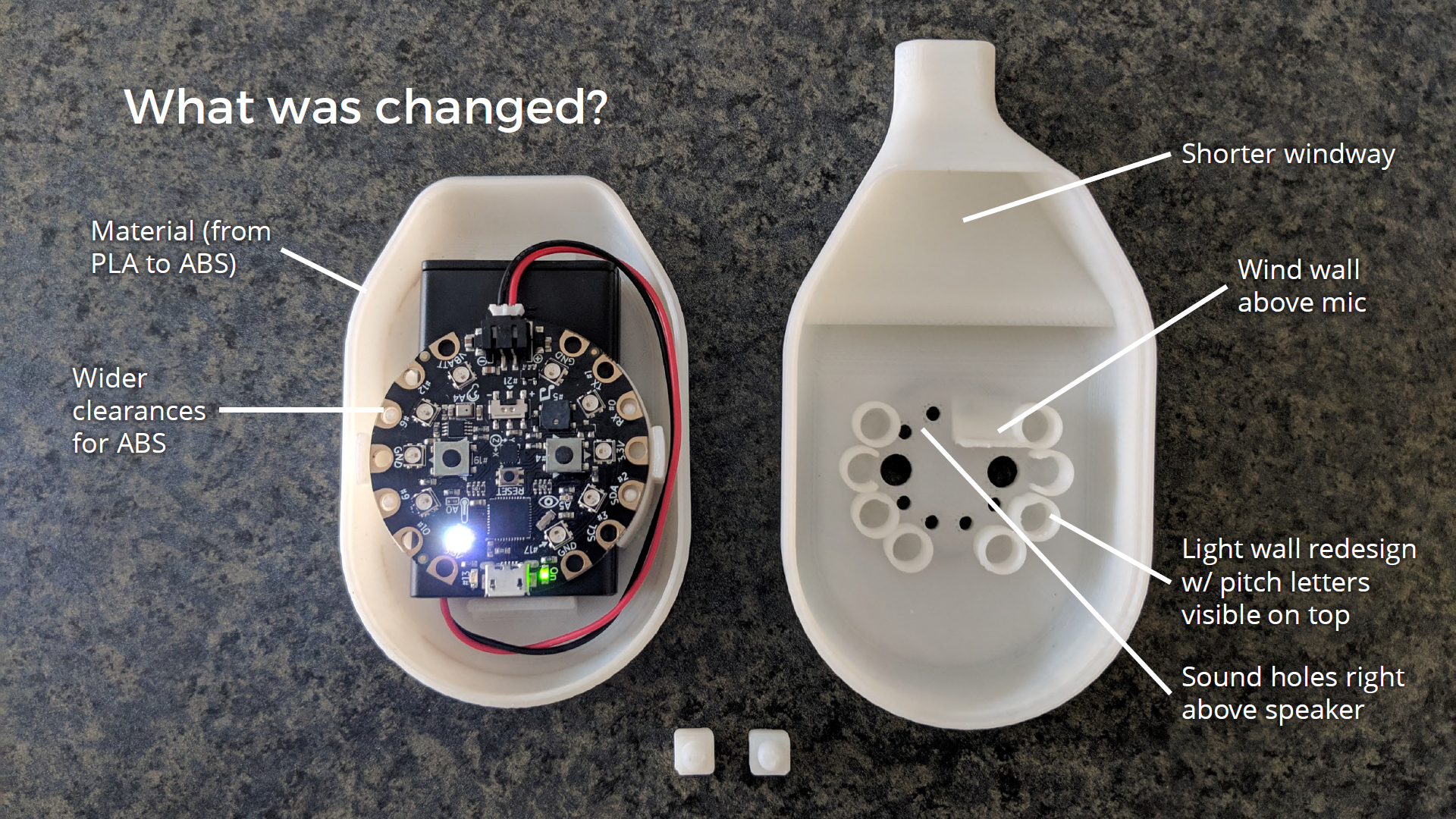
3rd Iteration
In this iteration, no major changes were made in terms of the overall form. The top piece was brought from the last iteration to save printing costs.
Other changes included:
- Smaller tolerance values for better friction fit.
- Extra foamcore pieces to direct the windway even more.
- Added an extra mouthpiece which allows users to plug a plastic straw and let other people try the instrument.
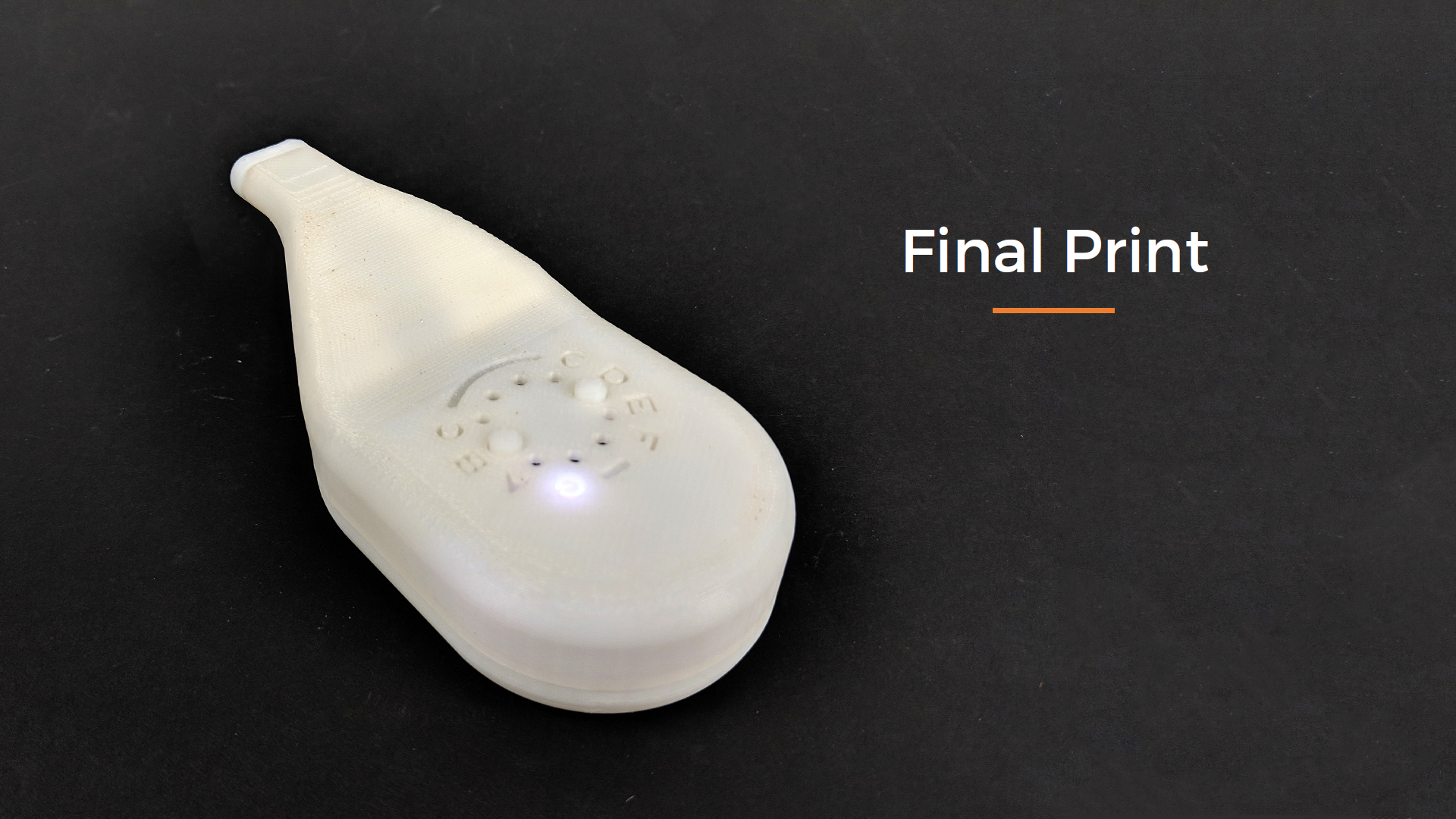
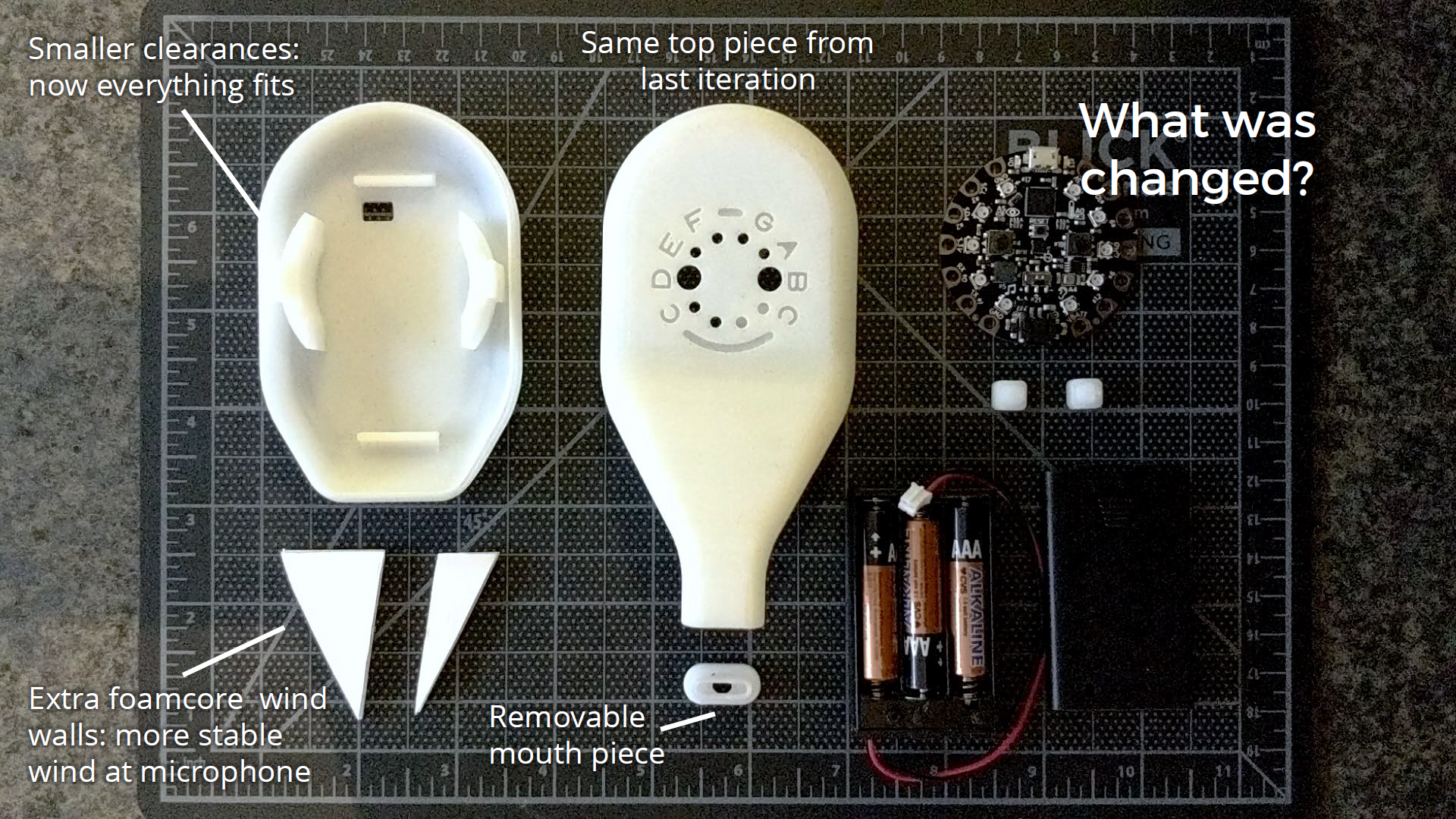
The Final Design
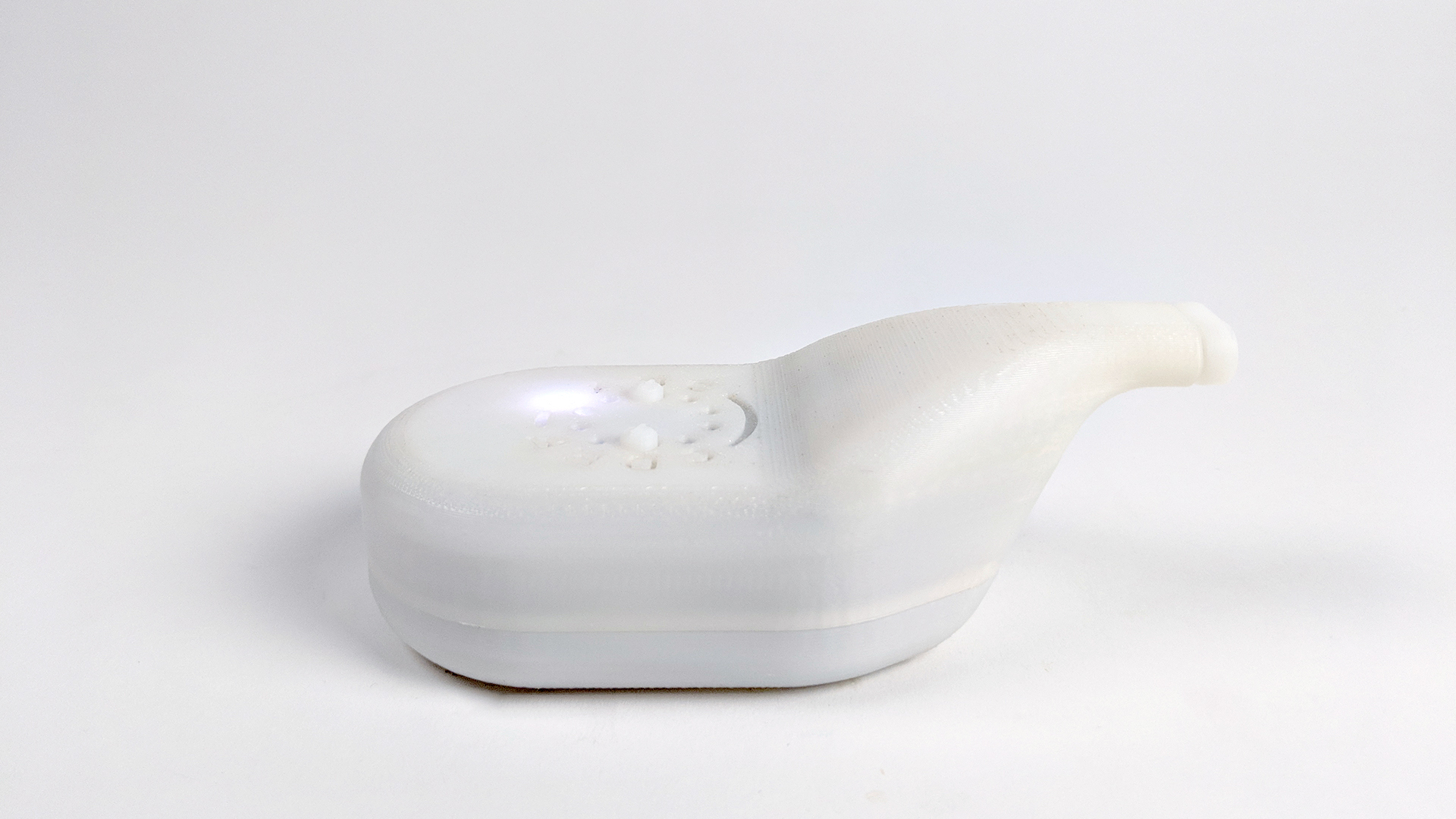
What I Found From Trying Uwi
Natural Mapping
The mapping between the tilting angle and the output pitch was natural and can be learned quickly. However, it takes a little practice to get used to the controls enough to play it accurately.
Easy to Start, Hard to Master
Uwi is easy to get started, but difficult to master. In other words, this instrument has a low "skill floor" and a high "skill ceiling". It appears that playing Uwi well requires a lot of precision and practice. This high challenge is what I think makes it fun to play.
Musical Expression
Precision in movement required to play an Uwi might actually limit musical expressions. However, it might also make a Uwi performance interesting to watch
To make the instrument more expressive, other features such as volume control and vibrato should be added. Pitch change could also be more continuous than discrete to allow more nuances in the performance.
Next Steps
- Experiment with a more analog controls set, for example, semi-continuous pitch, volume control, vibrato, that lets performers express themselves more.
- The sound produced from the current prototype is still too quiet, future iterations should experiment with other types of speakers for better sound.
- It can be interesting to create a characteristic timbre for Uwi to distinguish it from other electronic instruments.
- In this current prototype, the instrument must be almost totally disassembled for battery replacement. This is also a room for improvement for future prototypes.
